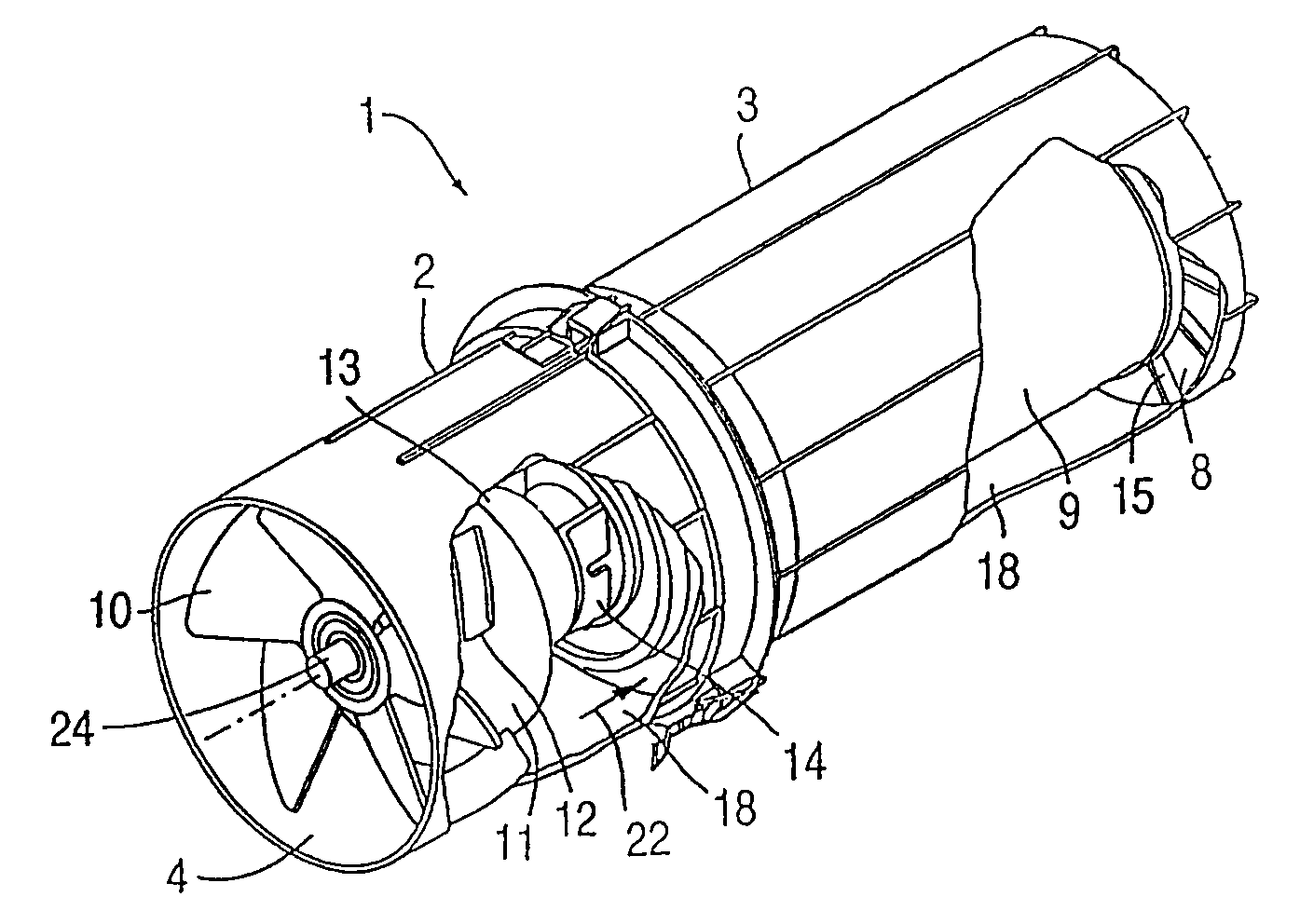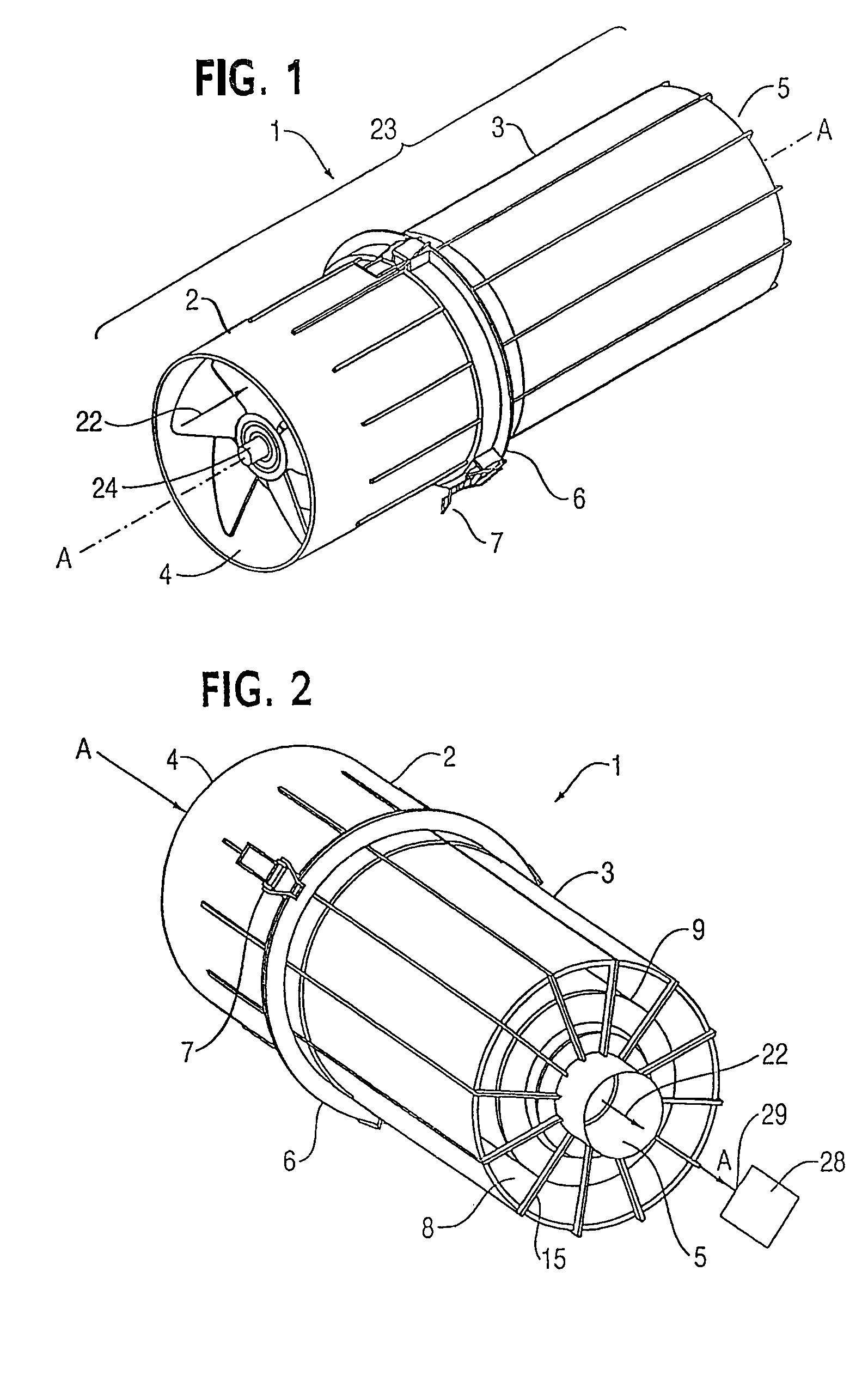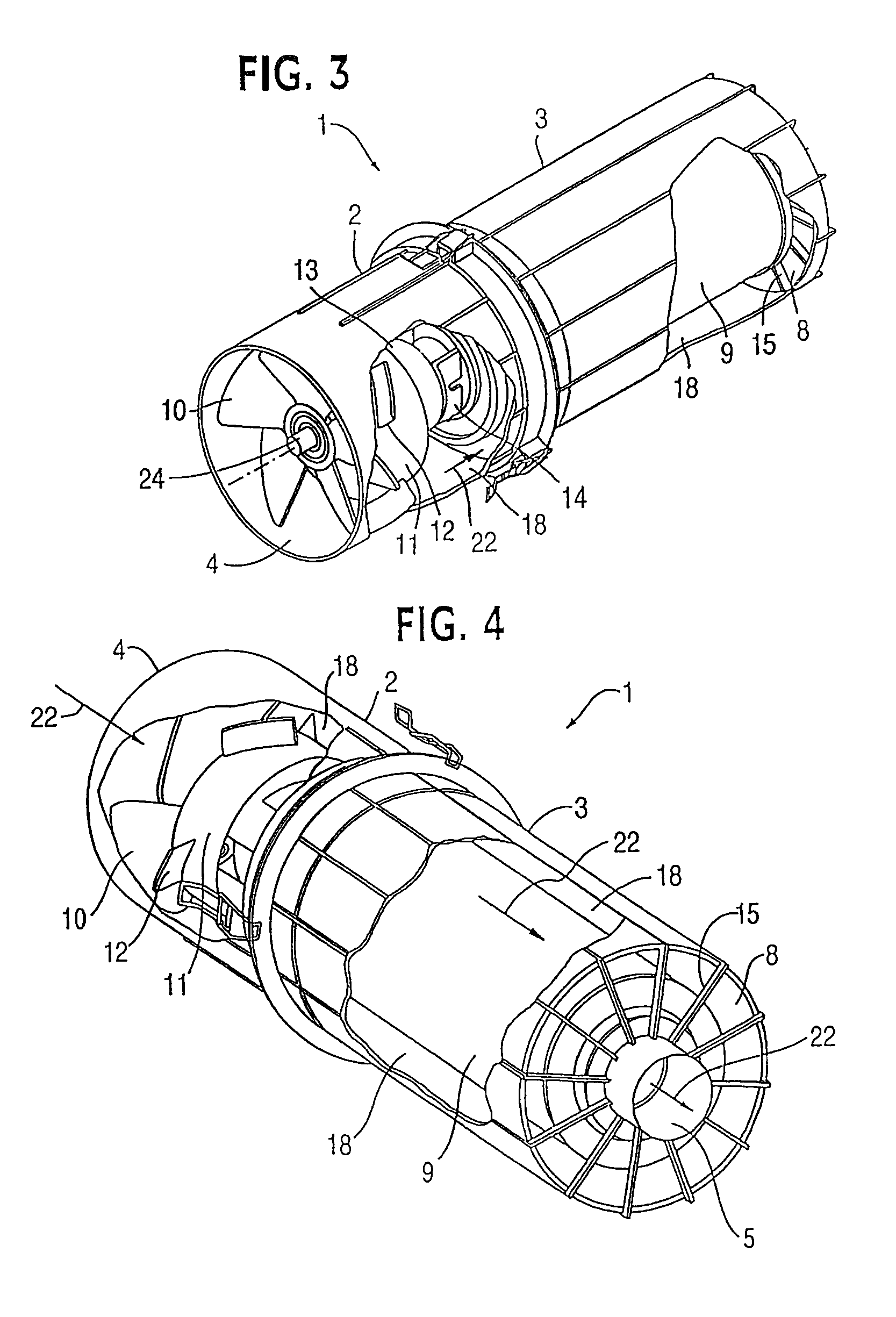Powered air cleaning system and air cleaning method
a technology of air cleaning system and air cleaning method, which is applied in the direction of liquid degasification, auxillary pretreatment, separation processes, etc., can solve the problems of increasing the restriction of air flow through the filter, increasing the cost of operation, and reducing so as to reduce the operating performance of an associated device, efficiently remove debris, and reduce the effect of operating cos
- Summary
- Abstract
- Description
- Claims
- Application Information
AI Technical Summary
Benefits of technology
Problems solved by technology
Method used
Image
Examples
Embodiment Construction
[0025]Referring now to the drawings, a powered air cleaning system or apparatus 1, FIGS. 1-6, according to a first example embodiment is shown connected to the air intake 29 of a device 28, such as an internal combustion engine or other device requiring a supply of clean air, as shown schematically in FIG. 2. The system comprises a flow path 22 extending through the system from an air inlet 4 to a clean air outlet 5 which supplies clean air to the air intake 29 of device 28. The flow path is located within a generally cylindrical housing 23 of the system. Housing 23 is formed by two detachable components—motorized fan housing 2 and filter housing 3 which are detachably connected to one another at a service flange assembly 6 by joining clips 7, see FIG. 7. For this purpose each of the housings 2 and 3 has a joining flange, 16 and 17, respectively. The housings 2 and 3 are shown detached from one another in FIG. 6 and shown separately in FIGS. 8 and 9, and 12 and 13, respectively.
[002...
PUM
| Property | Measurement | Unit |
|---|---|---|
| length | aaaaa | aaaaa |
| velocity | aaaaa | aaaaa |
| pressure | aaaaa | aaaaa |
Abstract
Description
Claims
Application Information
 Login to View More
Login to View More - R&D
- Intellectual Property
- Life Sciences
- Materials
- Tech Scout
- Unparalleled Data Quality
- Higher Quality Content
- 60% Fewer Hallucinations
Browse by: Latest US Patents, China's latest patents, Technical Efficacy Thesaurus, Application Domain, Technology Topic, Popular Technical Reports.
© 2025 PatSnap. All rights reserved.Legal|Privacy policy|Modern Slavery Act Transparency Statement|Sitemap|About US| Contact US: help@patsnap.com



